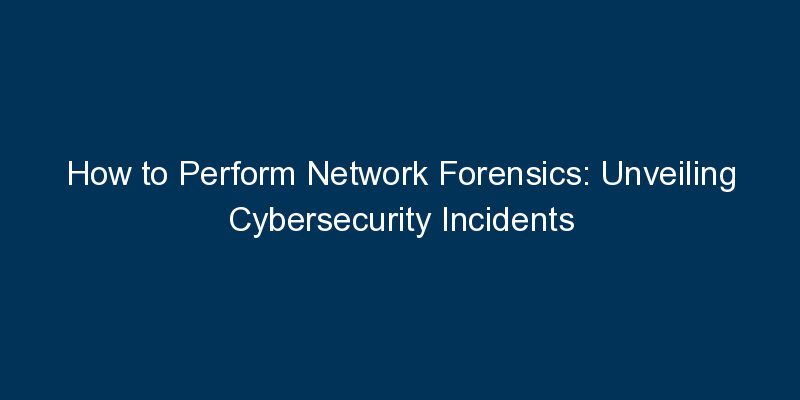Network forensics is a critical aspect of cybersecurity, enabling organizations to investigate and respond to security incidents. This blog provides a comprehensive guide on how to perform network forensics, equipping cybersecurity professionals with the skills to uncover and address cyber threats.
Introduction:
Network forensics involves the analysis of network traffic, logs, and activities to uncover security incidents and potential threats. This guide explores the methodologies and tools involved in performing effective network forensics, enhancing an organization’s ability to respond to cyber incidents.
Key Steps to Perform Network Forensics:
- Define Forensic Objectives: Clearly define the objectives of your network forensics investigation. Whether it’s identifying a security breach, understanding the scope of an incident, or attributing activities to specific actors, a well-defined objective is crucial.
- Data Collection and Preservation: Collect and preserve relevant network data, including logs, packet captures, and system snapshots. Ensure the integrity of the collected data to maintain its admissibility in legal or investigative proceedings.
- Timeline Reconstruction: Reconstruct a timeline of events to understand the sequence of activities leading to the security incident. This helps in identifying the entry point, lateral movement, and actions taken by threat actors.
- Pattern and Anomaly Analysis: Analyze network patterns and identify anomalies that may indicate malicious activities. This involves examining network traffic for unusual behaviors, connections, or data transfers.
- Digital Evidence Extraction: Extract digital evidence from network data that can be used for further analysis or legal purposes. This may include file artifacts, communication logs, and any evidence related to the security incident.
- Incident Reporting and Documentation: Create detailed reports documenting the findings of the network forensics investigation. Include a summary of the incident, the methodologies used, evidence collected, and recommendations for remediation.
Conclusion:
Performing network forensics is a crucial skill for cybersecurity professionals tasked with uncovering and responding to security incidents. By following the steps outlined in this guide, organizations can enhance their ability to investigate and mitigate the impact of cyber threats.






















Comments